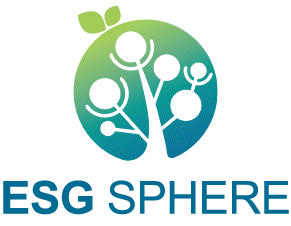Moving Towards A Sustainable Supply Chain
In Wistron’s strategic partnerships, suppliers play a critical role. We recognize that collaboration with suppliers is not only fundamental to business success but also a key enabler of the company’s sustainability goals. As such, a sustainable supply base has been identified as one of the Six Sustainability Strategies at Wistron. We integrate sustainability principles into procurement management by focusing on three key drivers: risk management, competitive advantage, and cost optimization. Our approach aligns with the ISO 20400 Sustainable Procurement Guidance and the Responsible Business Alliance (RBA) Code of Conduct, ensuring that suppliers continually improve their performance across environmental, social, and governance (ESG) dimensions.In 2024, Wistron successfully implemented ISO 20400, embedding sustainability into its procurement policies and strategies. Centered on the six core subjects of social responsibility—organizational governance, human rights, labor practices, fair operating practices, consumer issues, and environmental protection—Wistron promotes sustainability goals at every stage through a systematic supplier management process and cross-functional collaboration.
Supply Chain Management Framework and Overview
Sustainable Supply Chain Strategy
Wistron values collaboration and mutual growth with its suppliers. Building on its Sustainable Procurement Policy and in response to customer expectations, Wistron has developed a comprehensive sustainable supply chain strategy. This strategy focuses on optimizing the core competitiveness of strategic suppliers, deepening regional strategic collaboration, and strengthening supply chain resilience. By implementing these strategies, Wistron enhances suppliers’ competitiveness in terms of technology, resources, and market adaptability. Regional cooperation further increases the supply chain’s agility and efficiency, ultimately enabling the establishment of a more stable, flexible, and resilient sustainable supply chain system in an increasingly dynamic global market environment..JPG)
- Optimize Core Competitiveness of Strategic Suppliers: Wistron has established a global procurement unit and supplier quality management unit for supplier management. The units control and manage standards and procedures for supplier selection while focusing on partnerships and growth together. They conduct risk evaluations, performance evaluations, audit guidance, education and training, and organize supplier conferences to ensure sustainability is rooted in the daily management of our supply chain.
- Deepen Regional & Strategic Cooperation: In addition to continuously enhancing suppliers’ core competitiveness, Wistron focuses on developing local supply chains and green, low-carbon supply chains, which include: (1) Continuously reducing external environmental impacts and costs while prioritizing local supply chains and deepening regional strategic cooperation; (2) Implementing green, low-carbon supply chain programs and guiding carbon-intensive suppliers towards carbon reduction and net-zero targets, striving to minimize resource and energy consumption.
- Strengthen Supply Chain Sustainable Resilience: In the face of supply chain management risks, we have established a supplier data management platform and a supplier digital learning platform through digital transformation to enhance the effectiveness of management. For our supplier data management platform, we regularly conduct supplier surveys to accelerate data collection and data analysis to identify our risks. For our supplier digital learning platform, we strengthen connections and engagement with suppliers through ad hoc training as well as immediate and consistent communication of our goals and sustainability-related information. We seek to ensure our suppliers fulfill their commitments, comply with the RBA code of conduct, and continue to improve.
Governance Structure
To ensure the comprehensiveness and effectiveness of sustainable supply chain management, Wistron designates the Board of Directors as the highest decision-making body for sustainable supply chain governance. The Board regularly oversees the progress and outcomes of various sustainability initiatives to ensure that all decisions and actions align with the Company’s long-term development goals. The ESG and Information Security Committee, a functional committee of the Board of Directors, reviews the work of the Sustainable supply base (pillar) twice a year to ensure the implementation of the sustainable supply chain management. In addition, the ESG Executive Committee is responsible for tracking the progress of each sustainable supply chain project and its performance results on a monthly basis.
- Sustainable Supply Chain Management Organization
.JPG)
Wistron Value Chain
Wistron is a leading company in the global ICT (Information and Communications Technology) industry, responsible for the design, manufacturing, and assembly of electronic products, as well as related services. Positioned in the midstream of the industry value chain—with component suppliers upstream and various customer groups downstream—Wistron vertically integrates the supply chain based on customer needs and is committed to delivering competitive products that meet the diverse demands of the market and our customers.
.JPG)
Supply Chain Overview
As a key supplier of information technology products to the global market, Taiwan plays a vital role in the ICT industry. Rooted in Taiwan with a global outlook, Wistron leverages its strong technical capabilities to provide customers with comprehensive hardware and software solutions, along with one-stop system integration services. By establishing a worldwide network of manufacturing sites and service hubs, Wistron ensures efficient and reliable support across global markets, meeting the needs of customers in various regions and further strengthening its core position within the global supply chain.
Wistron's main suppliers fall into four major categories: electronic parts, mechanical parts, maintenance repair operation (MRO), and logistics suppliers. In 2024, Wistron engaged in transactions with 1,683 suppliers. To enhance management efficiency and strengthen collaboration with key partners, suppliers are categorized into tiers, enabling more focused and in-depth supplier management. With ongoing supply chain restructuring and adjustments to Wistron’s manufacturing sites, the supply chain has been reconfigured to ensure greater flexibility, reduce risks, and enhance supply chain stability. Tier 1 suppliers are those who have conducted more than six transactions per year and accounted for over 90% of the annual transaction amount. In 2024, there were 404 tier 1 suppliers. Based on transaction share and strategic importance, 242 of these were further identified as significant tier 1 suppliers(Note 1) . To gradually reduce overall supply chain risks, we expanded our management scope to include non-tier 1 suppliers, identifying 171 such suppliers. Among them, 134 were further defined as significant non-tier 1(Note 2) suppliers and incorporated into our risk control measures to ensure stable supply chain operations..
-
Note 1 : Significant tier 1 suppliers : Including critical suppliers - high proportion of turnover (top 80% of annual transaction amount); ability of technology pioneering; the only source of supply is irreplaceable; high-risk suppliers - SAQ score below 80.
-
Note 2 : Significant non-tier 1 suppliers : 1. Agency transaction with SAQ score below 80 (Potentially high-risk suppliers) 2. The upstream supplier of the customer's designated trading supplier.
- 2024 Supplier Distribution by County/Region
| Total Number of Suppliers | Proportion of Purchase Amount (%) | |
|---|---|---|
| Taiwan | 522 | 55.86 |
| China | 908 | 34.20 |
| Asia Pacific | 129 | 6.79 |
| Americas | 84 | 1.42 |
| Europe | 22 | 0.21 |
| Others | 18 | 1.52 |
| Total | 1,683 | 100 |
- 2024 Tier 1 Suppliers by Category
| Total Number of Suppliers | Proportion of Purchase Amount (%) | |
|---|---|---|
| Electronic parts | 165 | 60.43 |
| Mechanical parts | 204 | 36.13 |
| Maintenance repair operation | 23 | 1.31 |
| Logistics | 12 | 1.99 |
| Total | 404 | 100 |
- 2024 Suppliers by Classification, Significance and Risks
| Total Number of Suppliers | Proportion of Purchase Amount (%) | |
|---|---|---|
| Tier 1 suppliers | 404 | 94.27 |
| Significant tier 1 suppliers | 242 | 87 |
| High risk suppliers | 9 | - |
| Significant non-tier 1 suppliers | 134 | - |







